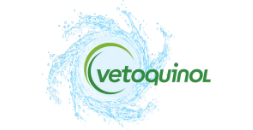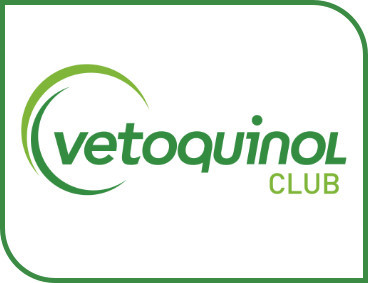Here is a list of frequently asked questions.
If you need technical support, please contact our team of Technical Service Veterinarians at: Canada_TSVsPABU@vetoquinol.com
Question: Does my water quality or water pH influence the effectiveness of the products I use?
Answer
In most cases, your water will not influence the effectiveness of your products, however, very hard water may affect foamability of alkaline cleaners. In Canada, all approved disinfectants have been tested and approved for use in hard water
Question: What about using bleach as a disinfectant?
Answer
Bleach loses activity quickly in the presence of organic debris and therefore should only be applied to clean surfaces. Reaction between chlorine bleach and amino acids from urine, body fluids and feces leads to formation of potentially toxic chloramines and chlorine gas. It is also important to use fresh solutions, as bleach is inactivated by sunlight and some metals. In addition to the strong odour, high concentrations of bleach that are required to kill viruses like parvo and calicivirus can be irritating to the eyes, skin, and mucous membranes. There are other commercial products like Virkon® that are more effective, safer for human and environmental exposure, and less damaging to clothing and surfaces.
Question: What is biofilm?
Answer
Biofilm is formed when microbial cells adhere to each other and on to surfaces, and become embedded in a matrix of self-produced extracellular substances including DNA, protein, and sugars. Depending on the situation, biofilm may harbour different types of microbes such as bacteria, viruses, and fungi. Biofilm protects the microbes from the action of disinfectants. Eventually, bits and pieces of the biofilm can detach and contaminate other surfaces and spread disease. Biofilm can be less than 1 mm thick and is often not visible to the naked eye.
Question: How do I remove biofilm?
Answer
The most efficient way to remove biofilm is by using an appropriate cleaner according to its recommended label directions. Cleaners contain high amounts of surfactants that penetrate, break down and detach the organic matter and/or mineral deposits found in the biofilm. They also contain emulsifiers to ensure that the soiling stays in suspension so that it can be rinsed off and removed from surfaces.
Question: Why do I need to rotate cleaners?
Answer
Organic matter is more efficiently removed with alkaline cleaners, while scale and mineral deposits are more efficiently removed with acidic cleaners. Since the most important heavy soiling challenge in a veterinary clinic consists of organic matter, using alkaline cleaners is recommended most of the time. In the presence of hard water and/or high mineral content, rotating with an acidic cleaner will ensure that scale and mineral deposits will be better managed.
Question: Why does Virkon® sometimes leave a white film on surfaces after drying?
Answer
Virkon® is licensed as a disinfectant/cleaner that contains a surfactant and inorganic salts. After drying, a light surfactant and salt residue may remain. This residue can be easily removed with water or a damp cloth.
Question: Why is it important to use a cleaner?
Answer
Question: Do I really need to wash a surface before I disinfect?
Answer
Although disinfectants may contain surfactants, these surfactants are present to help the active ingredient penetrate and adhere to the surface. Unlike cleaners, they are not meant to penetrate heavy layers of organic soiling or minerals; some disinfectant families are quickly neutralized by organic and mineral compounds. Disinfectants will work better on soiled surfaces that have been cleaned with a cleaner prior to disinfection.
Question: What else can affect the products I use?
Answer
Too much water remaining on surfaces will dilute the cleaner or disinfectant, which reduces its effectiveness. Too much water remaining on surfaces will impede the adherence and penetration of the cleaner or disinfectant solution. Residue from previous products on surfaces may interfere and neutralize the next product that is applied.
Question: Hot water versus cold water?
Answer
Although hot water is better than cold water to detach and remove soiling, it is not as efficient as hot water with cleaner for dissolving fats. If the water is too hot, however, it may cook and “fix” proteins to surfaces. Wash water temperature should be less than 60 degrees C.
Question: What do I do if the cleaning solution has dried onto the surface before rinsing?
Answer
Re-apply the same cleaning solution and let it soak again for 10–15 minutes and then rinse off before it dries.
Why is Virkon® pink, and how do I know it is still active?
Answer
Virkon® has a pink dye indicator when mixed. Fading of the pink colour indicates the activity has decreased and it is time to replenish the solution. When the pink colour is gone and the solution becomes cloudy white, it is inactive. Direct sunlight will also cause the pink colour indicator to fade more rapidly.
How long does Virkon® normally last after mixing?
Answer
Virkon® activity decreases over time. There is a 20% loss of activity of 1% solutions of Virkon® after 14 days in very hard water (350 ppm). To maintain high efficacy, it is recommended that Virkon® solution be discarded after 7 days.
Question: What precautions should be used when handling Virkon® powder in dry form?
Answer
Keep out of reach of children. Powder is irritating to eyes, skin, and mucous membranes. May be harmful if swallowed or inhaled. Do not get powder in eyes. Avoid contact of powder with skin. Handle in such a way as to minimize dust release. Consult the label for a full list of precautions and first aid advice.
Question: How safe is Virkon® after mixing into a 1% solution?
Answer
There are no occupational exposure limits for 1% Virkon® solution. It is considered a non-irritant to skin and eyes, and is of low toxicity.
Question: Is Virkon® safe for the environment?
Answer
Yes, Virkon® consists mainly of inorganic salts which decompose into harmless by-products.
Question: What are recommended storage conditions for Virkon®?
Answer
It is recommended that Virkon® powder or tablets are stored dry at 15 to 25 degrees C. Virkon® solution can be stored at room temperature, however, higher temperatures will reduce lifespan of the solution.
The scoop in the Virkon® container is labelled to contain millilitres but mixing instructions relate to grams of powder. How do I use the scoop correctly?
Answer
1 mL of Virkon® powder weighs approximately 1 gram.
TABLE OF CONTENTS
1 ► PRINCIPLES OF CLEANING
Biofilm
Mineral deposits
What is a cleaner?
Selection of an appropriate cleaner
2 ► PRINCIPLES OF DISINFECTION
Sensitivity to disinfectants
All disinfectants are not created equally
3 ► CLEANING AND DISINFECTION STEPS
Removal of organic material
Cleaner application
Disinfection
4 ► CLEANING AND DISINFECTION STEPS FOR ANIMAL HOUSING
Runs and kennels
Cages
Large animal stalls
Calf crates
5 ► RISK ZONES WITHIN THE CLINIC
Low risk
Intermediate risk
High risk
6 ► APPLICATION METHODS
Spraying versus foaming
Equipment
Dedication of equipment by risk zone
Footwear disinfection
7 ► VETOQUINOL CLEANING AND DISINFECTION PRODUCTS
Vetoquinol Cleaners
Biosolve™ Plus
Biosolve™ AFC
Vetoquinol Disinfectants
Virkon®
BioSentry® 904
Clinicide
8 ► FREQUENTLY ASKED QUESTIONS
9 ► BIOSECURITY REFERENCES
QUIZ ► TEST YOUR KNOWLEDGE
Vetocontact
Access restricted to veterinarians


